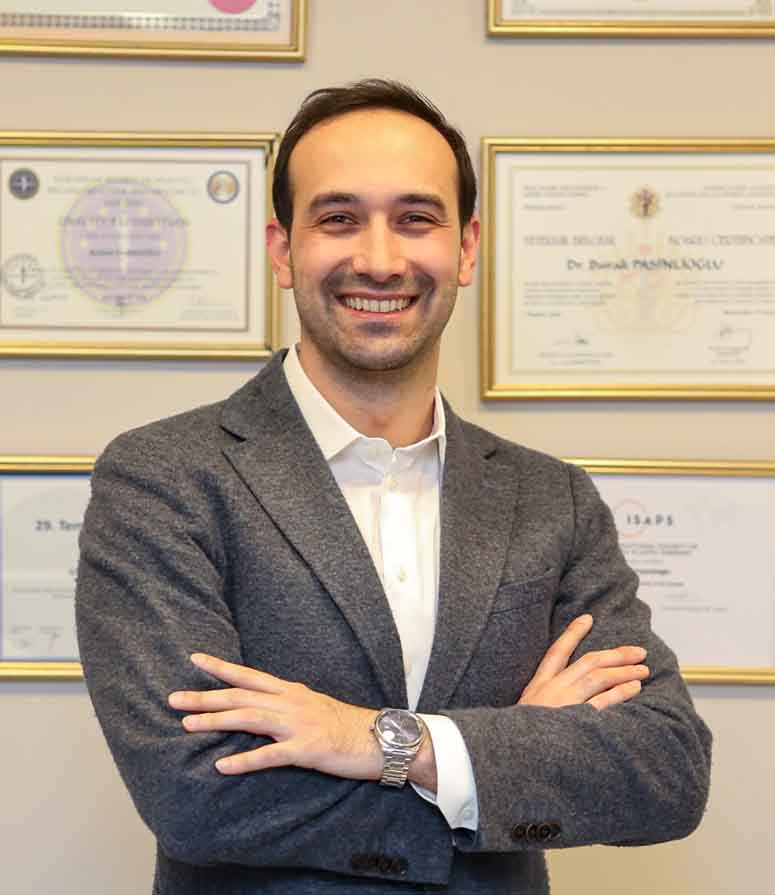Fat Injection
Fat injection, one of the most common aesthetic methods of today, is a non-surgical aesthetic method performed by taking the fat present in the body by injection and transferring it to an area to give fullness. This procedure, which acts as a filling, is among the frequently preferred applications because it does not affect the flow of daily life and is less laborious than other operations.

F.A.Q.

There is a very low chance of infection. This problem can be solved with simple antibiotics and dressings in line with your doctor's recommendations. There is no other risk.
The patient can continue daily life 1 day after the operation. At the end of 2 weeks, the change reaches a visible level.
It should be noted that this is a very low probability. In the application, fat taken from the person's body is injected. As fat in any part of the body can melt, there is a possibility that the injected fat will melt over time, but as mentioned, this is a very low probability. The aim of the operation is to create a process that will be done once and will not be repeated.
Fat injection is generally known as the chin and cheekbone, hip area and forehead area are the most common areas where this application is performed. Fat injection in these areas aims to reshape and restore the aesthetic appearance.
There is a low probability of infection. Abscesses may occur due to this condition.
Op. Dr. Burak Pasinlioglu
Fat Injection: Natural Volume in Aesthetics
Fat injection is a commonly used technique in aesthetic and reconstructive surgery. This method involves taking fat tissue from the body and injecting it into the desired area. Fat injection aims to provide volume and fullness to the injected area. When performed safely and effectively, this procedure yields natural and long-lasting results.
Procedure of Fat Injection
-
Consultation and Evaluation: Before the procedure, a consultation with a plastic surgeon is conducted. The surgeon listens to the patient's desires, reviews their medical history, and develops a suitable plan.
-
Fat Harvesting: The procedure typically begins by harvesting fat from the patient's own body. This is usually done through liposuction from areas such as the abdomen, thighs, or buttocks.
-
Fat Processing: The harvested fat is processed and purified in the laboratory. The fat is rendered pure and injectable.
-
Injection: The prepared fat is injected into the desired areas through fine needles. The injection process is tailored to the patient's desires and the surgeon's recommendations.
-
Recovery: After the procedure, patients may experience mild discomfort or swelling. However, these discomforts typically resolve quickly. The recovery process varies depending on the patient's overall health, the size of the treated area, and other factors.
Application Areas of Fat Injection
Fat injection can be used for various aesthetic and reconstructive purposes. The main application areas include:
-
Facial Filling: Fat injection is commonly used to reduce wrinkles, enhance cheeks, shape lips, and correct under-eye bags.
-
Breast Augmentation: Fat injection can be used to increase or reshape breast volume.
-
Buttock Augmentation: Injection of fat into the buttocks can provide a fuller and uplifted appearance.
-
Cheekbone and Jawline Contouring: Fat injection can enhance the definition of cheekbones or the jawline.
Risks and Complications
While fat injection procedures are generally safe, there are some risks and complications to consider. These may include:
-
Infection: There is a risk of infection after the procedure. However, this risk can be minimized by adhering to sterilization and hygiene measures.
-
Asymmetry: Fat injection may sometimes result in asymmetrical outcomes. Careful planning and execution are necessary to prevent this.
-
Temporary Side Effects: Temporary side effects such as swelling, bruising, or tenderness may occur after the procedure. These typically resolve quickly.
Conclusion and Recommendations
Fat injection is an effective option for those seeking natural and long-lasting results. However, it is important to consult with a doctor before the procedure and develop a suitable plan. Additionally, adherence to the recommended recovery process and regular follow-ups are essential.


